As an Amazon Associate I earn from qualifying purchases.
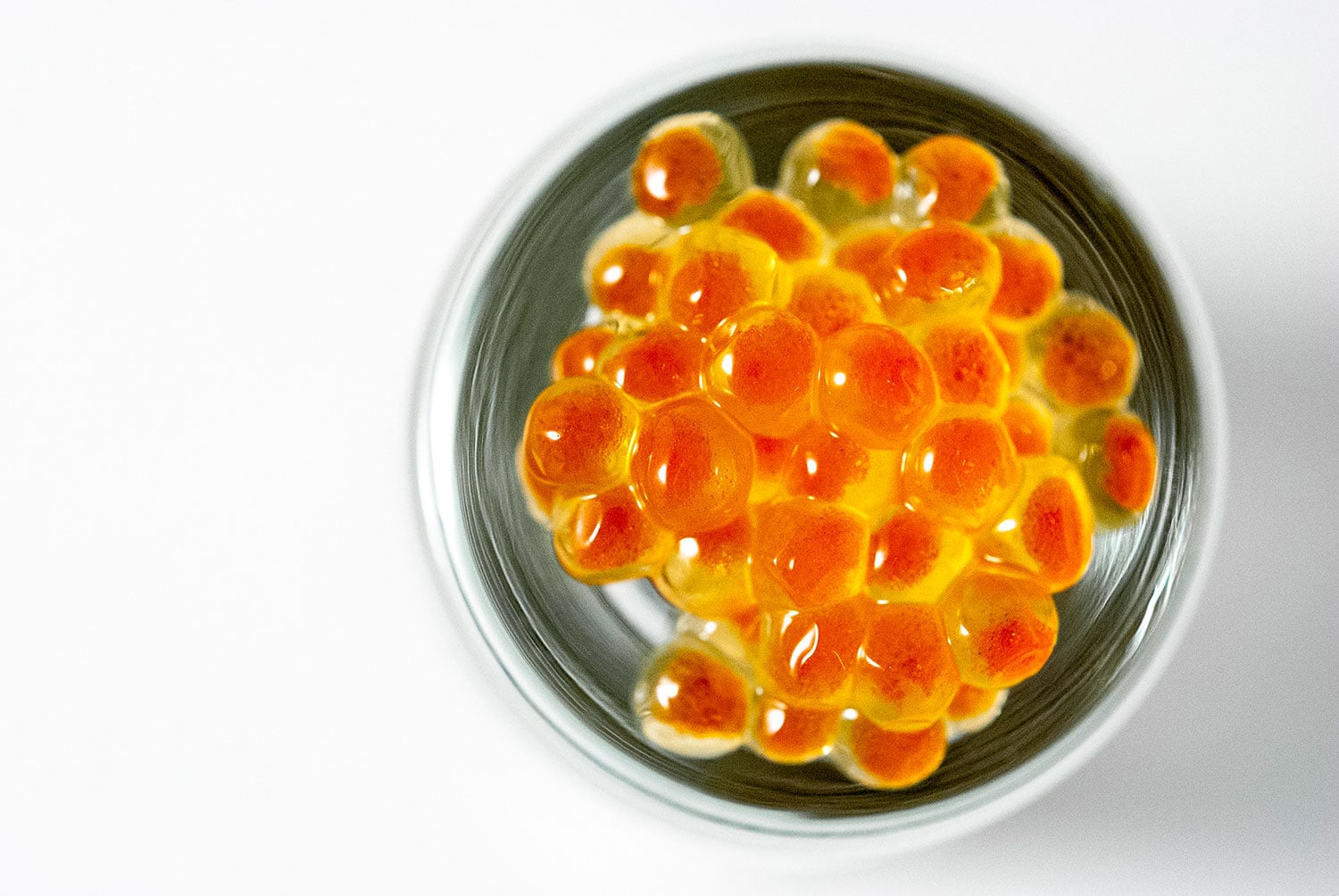
Caviar has always had a hold on me. It is a mysterious ingredient, almost otherworldy; the individual eggs look like jewels from an alien planet. Caviar tastes briny and vaguely floral, and the textural surprise of the pop in your mouth has led more than one writer to liken it to Pop Rocks for adults.
I’ve eaten all sorts of caviar, from spendy Osetra sturgeon caviar to our own California white sturgeon eggs, to Paddlefish roe to salmon roe ikura, to the wonderful little eggs from flying fish (tobiko), capelin and whitefish, which is a golden yellow. I’ve also eaten caviar from trout and char.
Steelhead roe is a particular favorite, as is king salmon roe.
I’d read about a general method of making caviar in a book called The Philosopher Fish, which involves gently removing the eggs from the skein — the membrane holding them together — rinsing them, salting them and drying them. It seemed pretty easy, which alarmed me: How could something so mysterious be so easy to create? It didn’t seem fair.
I delved into some more research, and it is indeed that easy. The art comes in the details: How do you get the eggs out of the skein? How much salt? How long to brine or rub the eggs? What temperature do you store them at?
So I use an amalgam of the methods I’d read about. I brine the salmon roe for a half hour in the fridge. Then I run the skein under hot tap water, which shrinks the membrane and lets the eggs drop into a colander. I then return the eggs to the brine for another 30 minutes. I rinse them off and let them drain in the colander for 15 minutes. Then I package them into a clean glass jar in the fridge. Done!
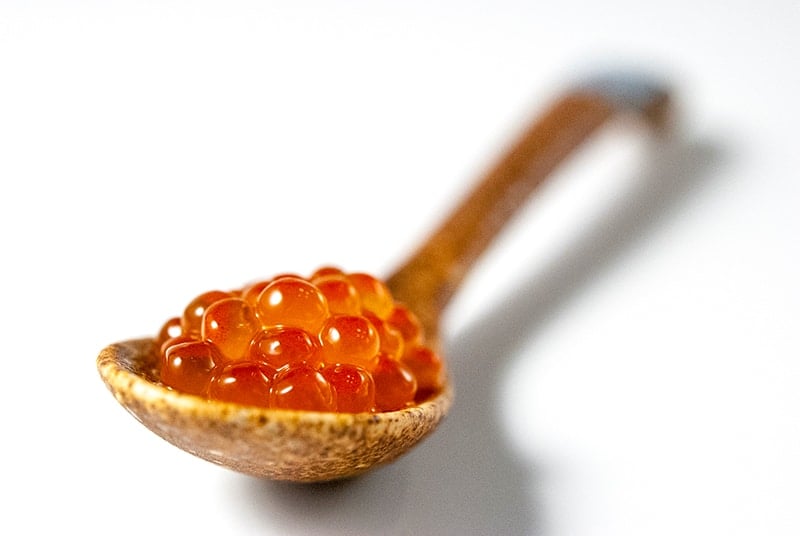
And there is an easier way: Run them over a cooling rack, membrane side up. Either method results in some egg loss, and the hot water trick can sometimes cook the eggs, which is no bueno.
Aren’t they the coolest things ever? I have a hard time not taking them out of the fridge just to look at them. homemade caviar keeps for 2 weeks in the fridge, but I think it gets fishy after about a week.
I prefer my caviar straight, served in a special spoon, so you can linger over the qualities of this caviar versus that one; this is what the Russians do when they serve the three classic sturgeon caviars: Beluga, Sevruga and Osetra. In case anyone cares, I am particularly fond of Osetra, which is pretty close to our caviar made from California white sturgeon.
Remove from your mind the notion that the only good caviar comes from sturgeon.
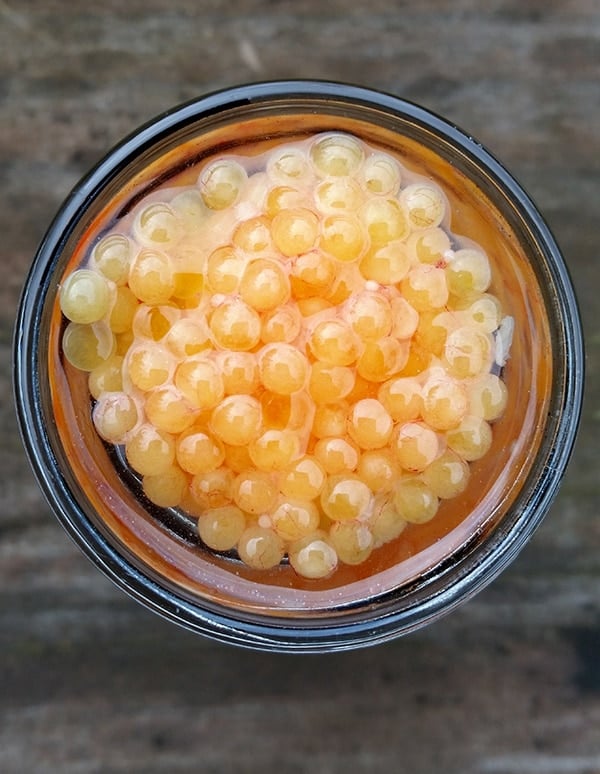
The tobiko and masago you see in sushi restaurants is caviar from the flying fish and the capelin, a kind of herring. It really is like pop rocks. Whitefish caviar is even better, and is a beautiful canary color. Lumpfish is like a larger sturgeon caviar, but trout and salmon caviar is its own thing: large, luxurious, and slightly fatty — I saw thousands of minute fat droplets floating on the top of the brine when I made it.
When combined with a larger dish, caviar can become an accent that makes a good dish great.
I make a pasta dish with flaked salmon, mixed with toasted pine nuts, parsley, shallots, olive oil, Meyer lemon juice — and a spoonful of salmon roe caviar. The color and pop really makes the dish.
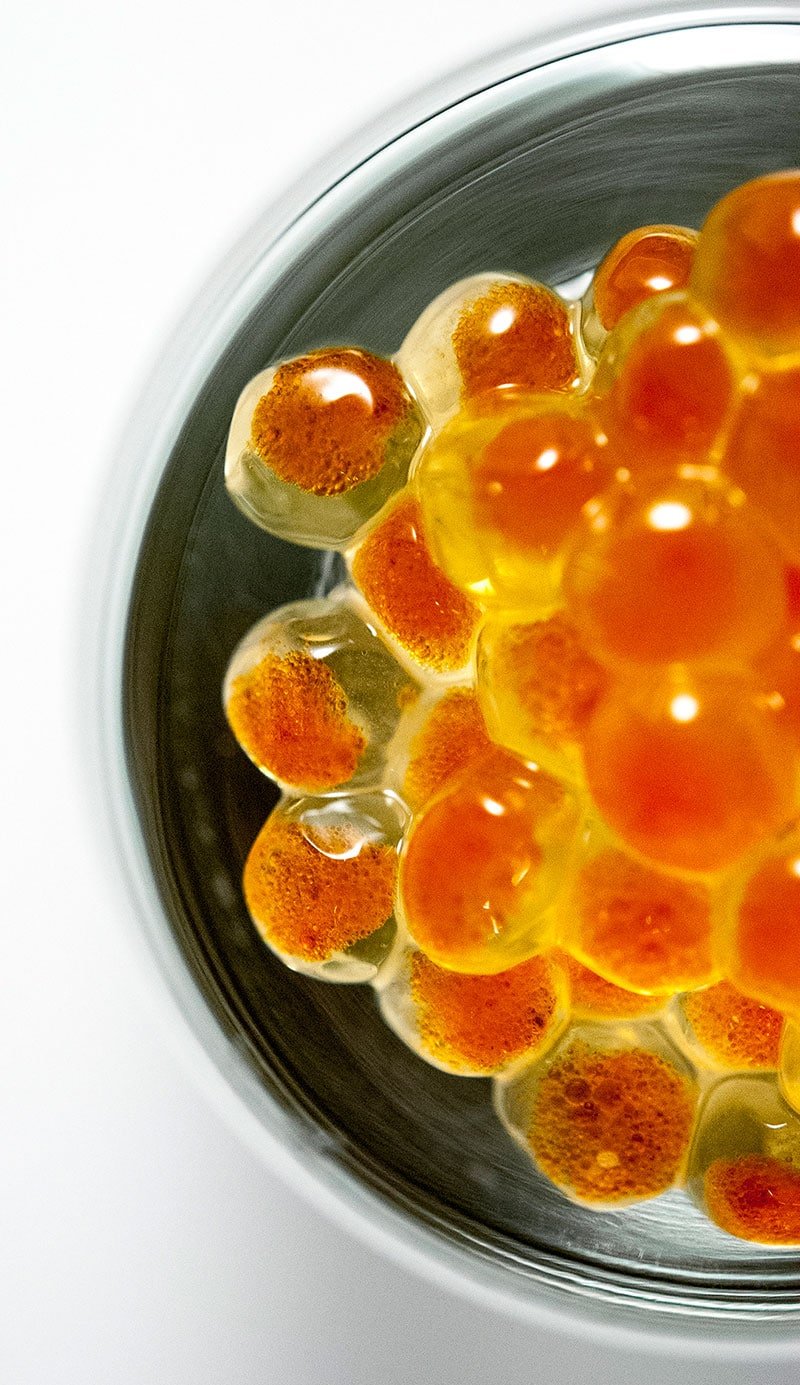
Homemade caviar also works well as a garnish for a simple Japanese dish of salmon or trout wrapped in buttered foil with some matsutake (or other) mushrooms, sake and lemon slices, then baked it for 20 minutes. Damn good.
Will this method work for other fish roes? Yep. I imagine the salting times and care you will need to dislodge the eggs will change, but the basic technique shouldn’t change.
How to Make Caviar
Ingredients
- 1 full skein of steelhead, trout or salmon roe
- 1/2 cup kosher salt
Instructions
- Mix the salt and 1 quart ice-cold water until the salt is all dissolved.
- Make sure the roe skeins are split, so you have an opening that the eggs can come out. Set up a cooling rack or something else with a wide mesh (chicken wire works, too) over a bowl. Take a roe skein and, with the membrane facing up work the eggs out through the rack. Perfectly ripe eggs will come off easily, unripe ones will require some force. Either way, you will pop some eggs in the process.
- ALTERNATE METHOD: Get the faucet running with warm water roughly 105°F to 115°F, or heat cool tap water to this temperature -- some people fear that hot tap water can add harsh minerals to their food. Either way works. Fill a metal or glass bowl with the warm water. Dunk a few skeins of roe at a time in the warm water. Gently massage the eggs out of the skeins with your fingers under the surface of the warm water. They will float away and sink. Discard the skeins.
- Have a fine-meshed sieve ready. Pour the strained eggs into the strainer to rinse them well with cold water. Pick out clumps or stray bits of membrane.
- Dunk the eggs in the brine for 5 minutes. Taste them and if they are salty enough for you, drain them again. You can brine for up to 30 minutes, but they will be very salty. My preferred brine time is 10 minutes. Spoon carefully into a clean glass jar and refrigerate for up to 2 weeks, but try to eat them within a week or they will start to get fishy.
Notes
Nutrition information is automatically calculated, so should only be used as an approximation.

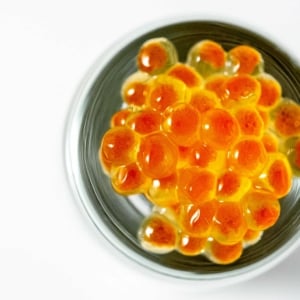

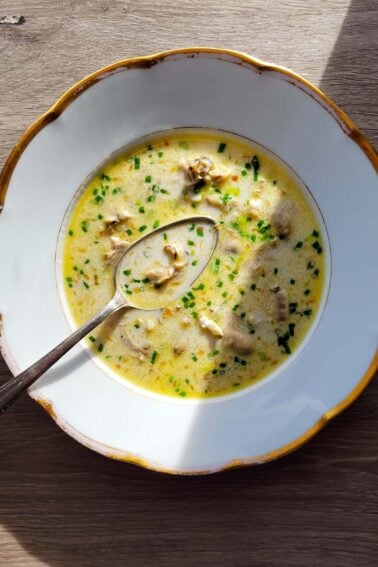


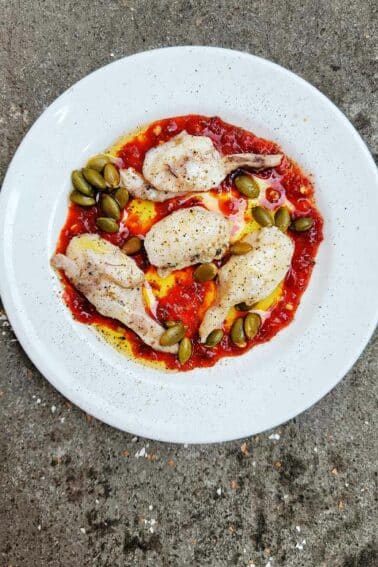
I am going sturgeon fishing later this month and hope to catch one in the keeper range of the slot. How long from taking the fish to making the caviar? How do I transport the roe from where we catch the fish and spend the night and make the 5 hour trip home? The fish we’ll pack with ice in a large plastic bag, hopefully in a large enough cooler to hold it. Just wondering how much we’ll get from a 4ft sturgeon…..
Keith: Sorry to burst your bubble, but there is a 98% chance you won’t catch a sturgeon with roe: That’s why they set the slot limit the way they do. My friend who is a sturgeon guide gets maybe 2 a year. Very, very rare.
Tried this last weekend with some fresh steelhead row from the Rogue River in Oregon. OMG! So, so surprisingly good. Thanks for this. Love your site, even more so, since I lived in Woodland for 5 years and often recognize the places you write about. Loved your episode of Bourdain’s show. Keep up the great writing. You’re on a righteous mission.
Do you feel this process will work well with paddlefish roe? We do catch some females who are laden with roe later in the season here in Missouri. I would like to at least try it and have my family try this. I have eaten sturgeon caviar in the past and enjoyed it.
Tom: Yep. Should work just fine!
Dear friends
How could I prepare snail caviar? Can I use this guide and apply to snail eggs to make caviar?
Anh: You’re on your own with this one, sorry!
Thank you for sharing. The one thing I would caution about is that using anything metal (bowl, strainer, spoon, storage container) will transfer some metallic taste to the roe. Best to stick with plastic strainer, plastic or glass bowl/tub for cleaning; plastic or wooden spoon for stirring.
Bluegills,Redears,and all types of Perch Roe make good Caviar with the best coming from Black Crappie & Sac-a-Lait. Catfish Roe is plentiful and easy to work with from Blue Channel,Channel,and Flathead (“Opps”) Catfish.Here in Louisiana we are still allowed to Catch Two Spoonbills per person and you know that is good. Never tried it Bowfin (“Choupique”)but I don’t see why not! All of this Roe can be battered and deep fried if you want to try it. Catfish Roe can be lightly smoked before salting,but don’t dry it out! My Grandfather,born on a houseboat on the Atchafalaya River,told me that the Roe of ALL Garfish was poisionus and he would not mess with it.So I don’t either.
I have cought a lot of ripe hen steelhead in my day, and I hate seeing a hen spit her eggs out as I try to get the fly out of her mouth. Would those eggs works and taste the same as the eggs in skein?
As for the question as to whether caviar can be frozen, yes it can. I have eaten whitefish caviar (easy to get here in NE Wisconsin) after it was frozen and then thawed. It was excellent. You might need to rinse it and drain it before use, otherwise it’s a little slimy.
I would be interested to hear if others have frozen other kinds of homemade caviar and what were the results.
Thank you for your simple recipe. We sometimes go one step simpler by eating the roe straight from the landlocked salmon, the Maine state fish…..but it is a little more civilized your way.
I use the hot water method to get the eggs free of the skeins…and think it works the best.
I have “canned” some of my excess product. I hot water bath the small jars (8-10 oz) with a temp probe in the middle. When temp hits 140 I put the lids on and screw them down lightly. I then put a cover over the pan and simmmer them an additional 5 minutes, and then using a towel for heat protection screw the lids down firmly/tight. I leave them on the counter to check for a vaccum/tight seal, and then keep them in the frig in the coldest part till opening and using them.
It does give them a lighter orange color if using salmon roe, and it isn’t as good as fresh, but it does give me caviar year round.
Jars that don’t “seal” I use up within a few weeks.
Is it just salt used to preserve? Does anyone use Borax?
If the eggs are frozen to store does the glucose affect the flavour
when thawed?
Thanks
how about, processing fresh first. once its finished then freeze.
other method im interested in testing, is similar to how human or other animal reproductive eggs are harvested and stored. to combat freeze damage, they are stored in glucose i believe. but that might interfere with what ever kills any parasites. any thoughts?
Stephen: I’d like to know, too! I’ve never had any success working with either frozen eggs, or when I freeze the caviar. It always comes out mushy.
would like to know if it is damaging or even possible to freeze the eggs sometime in the process. more in the interest to deal with parasites than anything else.
my interest is mainly smelt/whitefish/salmon from inland lakes.
also is it possible to store frozen eggs? it seems i have seen some in the grocery store.
Is there anyone who has tried fresh water perch roe. I used to cure and devour herring roe while commercial fishing Alaska in a former life. I am going to try the curing/smoking recipe just to experiment. After filleting a nice catch of fresh water perch the roe just looked way to good to discard
To the gentleman inquiring about bowfin. This is my coonass caviar method: to remove the roe use a grease splatter screen over a bowl. Rub the skein gently around in a circular motion, until they fall through. Wash the roe in water, using your finger to stir the mass. Skim off the water and repeat until clean. Now for the brine, 1/2 cup of salt, 1 cup water, 1 dash of cayenne pepper, a spritz of lemon. Let the roe soak for and hour, strain off the water, I use a coffee filter in a colander. Taste, if too salty rinse with a little cold water. Once it’s to your liking, use multiple layers of paper towels to dry and place in a suitable container and refrigerate.
We caught some Lake Superior whitefish that are full of eggs. Do you have any other suggestions on how to make caviar out of them? Norm
Just pulled a large Mountain Whitefish from a river while visiting/fishing Wyoming. It was loaded with eggs. Anyone see a reason why this wouldn’t work for a Mountain Whitefish. Thanks!
Ha – two Yukoners stumble upon this independently within a day of each other. I just tried this for the first time with a lake whitefish I caught this evening in Little Atlin Lake (I’d have liked more than one, but they’re no longer as findable as they were through the summer); golden caviar, with lovely delicate lake and cucumber essence, delivered in salty little pops. I suspect I’ll make this again (and try it out with some larger eggs from different species, too).
Jennifer, your silver caviar looks amazing!
Thanks for the recipe! I shared it with the listeners of My Yukon Life podcast radio.